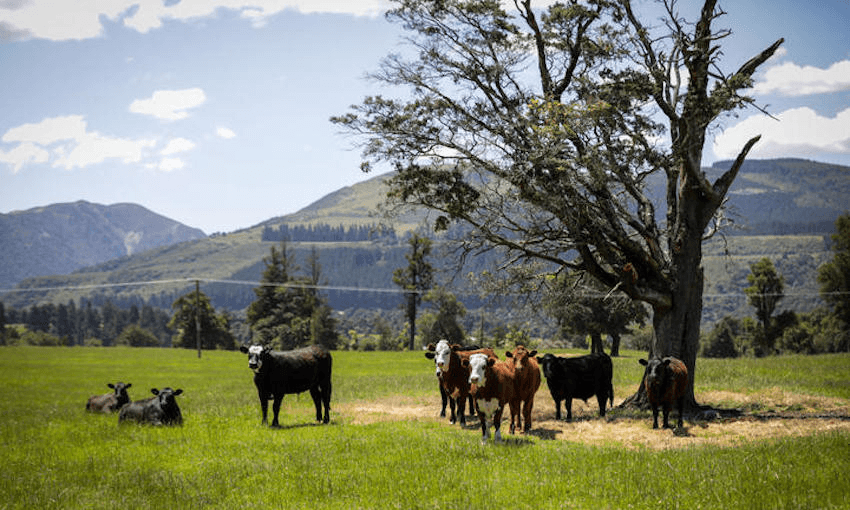New Zealand’s carbon market is acting odd and some worry it could push the conversion of more farms into pine forests, Justin Giovannetti writes in The Bulletin.
New Zealand’s carbon price is at a record high, which means planting pine trees will now fetch farmers more money than raising sheep and beef. That’s according to an analysis from Interest warning that the country’s farmers, as well as its timber industry, now face pressure from a surging carbon price. The result could be that productive land now used for livestock and lumber is turned over to forest plantations that suck up carbon emissions. Dairying, as well as growing fruits and vegetables, is still more profitable than trees. Carbon farming, as it’s sometimes known, isn’t a new idea, but the economics have shifted remarkably in recent years.
The interest in tree planting is growing on the ground. BusinessDesk reports that a carbon farming investment fund is looking to spend $15 million to buy 1,500 hectares of land where they could plant pine trees. The group estimates they can create a New Zealand unit, which is the term for one tonne worth of emissions, for between $20 and $25. Those units were recently selling for about $65 on the emissions trading scheme, doubling in less than a year. The business proposal for carbon farms is simple: You make money selling the emissions credits and do some forestry work on the side to keep the cash rolling in.
Time out: A quick explainer on the emissions trading scheme. Many companies need to own a credit, bought on the ETS, for every tonne of emissions they create in a year. Called a cap-and-trade scheme in other countries, the ETS is a market where those credits are bought and traded. There’s a cap on the number of credits that can exist, which means New Zealand’s overall emissions can’t go higher than a certain level and the price of credits fluctuates based on demand.
A number of farm sales have happened in recent months for tree conversions. A 20 square kilometre sheep and beef farm in the South Island was sold to an Austrian company that intends to cover most of it with pine forest, the Otago Daily Times reports. Four more farms were sold in July for conversion to forest. Local leaders have called on the government to bring more scrutiny to the sales, as it’s a pretty significant land-use change that could be indefinite as pine trees need decades to grow to maturity. According to The Gisborne Herald, Māori landowners have shown a preference for a move towards native trees.
The entire idea is not without critics. Some farm groups have been unhappy with a programme that transforms agricultural land into forests and the Climate Change Commission itself isn’t keen on the idea, as I reported in The Spinoff earlier this year. In advice to government, the commission said that there should be more of a focus on planting native trees, which take centuries to grow, and only in areas that aren’t suitable for agriculture. However it concluded that large-scale tree planting won’t help us meet climate targets long term, so we shouldn’t invest too much in it.
The country’s main mechanism for combating climate change (for now) is the emissions trading scheme and it has been acting a little odd in recent weeks. For starters, the price of carbon credits has soared. As Newsroom reports, an auction earlier this month saw the price that polluters needed to pay to buy a credit for a tonne of emissions break through an artificial ceiling set by the government. As a result of going above $50, the government tried to flood the market with new credits to keep prices down. It didn’t quite work and prices are above $60. The country will also need to figure out a way to reduce emissions in the future by 1.6 million tonnes, because those new credits need to come from somewhere.
New Zealand will face a push later this year to reduce its emissions. The United States and the European Union are preparing to reduce methane emissions by at least 30% by 2030, according to Newshub. The two will attempt to convince a number of countries to join a pact, including New Zealand. Methane is a powerful greenhouse gas, with up to 34 times more warming potential than carbon dioxide. The gas is also a byproduct of cows and is one of the main reasons New Zealand’s emissions have increased in recent years, with agriculture now accounting for nearly half. Planting trees might reduce the country’s overall emissions in the short-term, but it won’t help when faced with a methane pact from the rest of the world.
This is part of The Bulletin, The Spinoff’s must-read daily news wrap. To sign up for free, simply enter your email address below


